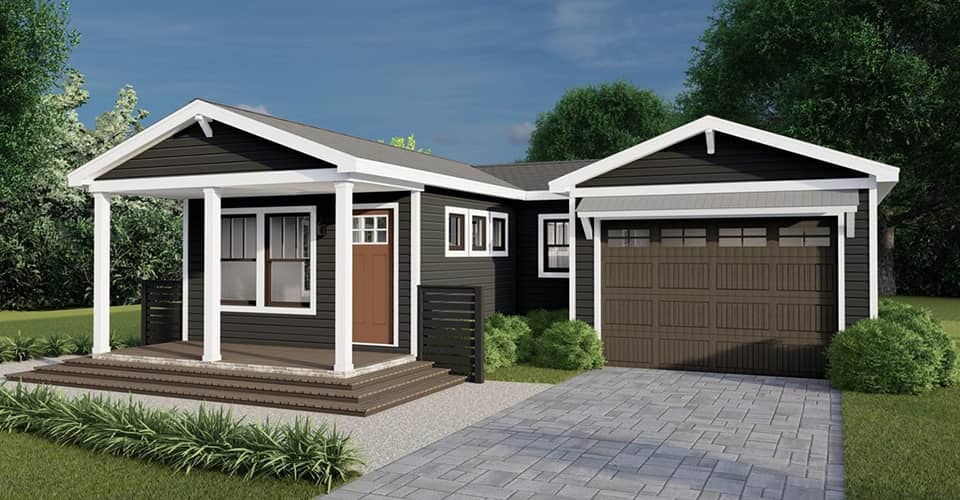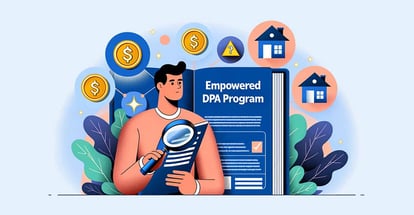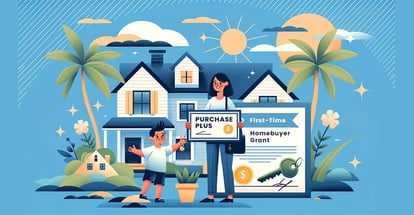10 Facts You NEED to Know About Manufactured Homes in 2024
With a 71% satisfaction rate among homeowners and an increase in home values, the popularity of manufactured homes is on the rise.
This article explores the latest trends in manufactured housing, showcasing why they're a smart choice for many Americans.
Table of Contents
- Affordability of Manufactured Homes
- Financing Manufactured Homes
- Value Appreciation of Manufactured Homes
- Introduction of CrossMod® Homes
- High Satisfaction Among Manufactured Home Residents
- Living in Manufactured Home Communities
- Growth in Manufactured Home Production
- Safety and Durability of Manufactured Homes
- Customization Options for Manufactured Homes
- Energy Efficiency in Manufactured Homes
- Bottom Line
Affordability of Manufactured Homes
Manufactured homes offer significant affordability advantages over traditional site-built homes. They provide outstanding quality and performance at prices that are up to 50% less per square foot.
This cost efficiency is attributed to the factory-building process, which utilizes standard building materials and assembles homes almost entirely off-site.
This controlled environment minimizes problems encountered in traditional construction, such as weather delays and theft, leading to more efficient and effective workforce management.
The overall average cost of a new manufactured home without land in 2022 was $127,250, at an average cost of $85.00 per square foot for single-section homes and $158,633 at $85.00 per square foot for multi-section homes, making them an affordable option for homeownership.
Financing Manufactured Homes
Financing for manufactured homes can be arranged through several avenues, catering to both personal property and real estate transactions.
Homebuyers have the option to finance their manufactured home as personal property, or chattel, even when the home and land are financed together.
Traditional lenders that specialize in manufactured home financing offer packages for land-and-home financing as personal property.
Additionally, if homebuyers wish to finance their home and land together as real property, they can obtain conventional mortgage financing through traditional mortgage lenders.
This approach is akin to financing for site-built homes and can involve securing a mortgage that covers both the land and the home.
For those interested in the newer class of manufactured homes, known as CrossMod® homes, Fannie Mae and Freddie Mac provide financing programs.
These programs offer borrowers traditional financing options, including lower interest rates, and allow for site-built comparisons in the appraisal process.
Value Appreciation of Manufactured Homes
Manufactured homes have shown the potential for value appreciation over time.
Between 2017 and 2022, the median home value of manufactured homes in the United States increased by over 34.6%, demonstrating that like traditional site-built homes, manufactured homes can also appreciate in value.
This appreciation is influenced by factors such as the home's condition, location, and the overall housing market dynamics.
However, it's important to note that while manufactured homes have the potential for appreciation, the rate and extent of appreciation can vary based on these and other factors.
Introduction of CrossMod® Homes
CrossMod® homes represent a revolutionary advancement in the manufactured housing industry, offering a new class of homes that are virtually indistinguishable from traditional site-built homes.
These homes come equipped with architectural features such as pitched roofs, porches, garages, and permanent foundations, blending seamlessly into existing neighborhoods and communities.

The introduction of CrossMod® homes addresses a wider range of homeowner preferences, merging the affordability and efficiency of manufactured housing with the aesthetic and structural qualities typically associated with site-built homes.
This innovation not only expands the options for prospective homeowners but also elevates the perception and appeal of manufactured housing as a whole.
High Satisfaction Among Manufactured Home Residents
A significant majority of manufactured home residents, 71%, report being satisfied with their homes. This high level of satisfaction reflects the quality, affordability, and comfort that these homes provide.
Manufactured homes have evolved to offer a wide range of amenities and designs that meet the diverse needs and preferences of homeowners.
From spacious floor plans and modern kitchens to energy-efficient features and customizable exteriors, manufactured homes deliver a living experience that rivals traditional site-built homes.
The satisfaction rate underscores the success of manufactured housing in providing a viable and desirable housing option for many Americans.
Living in Manufactured Home Communities
Living in manufactured home communities offers a unique set of benefits for residents. These communities, often referred to as land-lease communities, provide an environment where individuals can enjoy homeownership along with community amenities.
There are over 43,000 land-lease communities in the United States, offering around 4.3 million homesites. These communities often include shared facilities such as clubhouses, pools, and playgrounds, fostering a sense of community and belonging among residents.
One notable aspect of living in these communities is the financial model; residents typically own their manufactured home but lease the land it sits on. This can result in a more affordable entry point into homeownership.
However, it's important to consider that site rent can increase over time. The document notes an average annual site rent increase of 6.2%, compared to a 12% increase for new apartment tenants and a 3.5% increase for apartment tenants who renewed leases in 2022.
Growth in Manufactured Home Production
The manufactured home industry has seen significant growth, with 146 homebuilding facilities operated by 35 corporations, collectively producing 112,882 homes in 2022.
This growth is indicative of the increasing demand for manufactured homes, driven by their affordability, efficiency in construction, and the variety of design options available.
The ability to produce a large volume of homes within controlled factory settings not only ensures a high standard of quality but also contributes to the industry's capacity to meet the housing needs of diverse populations.
This production capacity highlights the role of manufactured homes in addressing the affordable housing crisis and offering a sustainable path to homeownership.
Safety and Durability of Manufactured Homes
Manufactured homes are designed and constructed to meet stringent safety and durability standards, ensuring they are a secure and long-lasting housing option.
These homes must adhere to the federal HUD Code, which was established in 1976 and sets rigorous guidelines for home design, construction strength and durability, fire resistance, and energy efficiency.
Notably, the HUD Code was updated in the early 1990s to enhance energy efficiency and ventilation standards, as well as to improve the wind resistance of manufactured homes in areas prone to hurricane-force winds.
Today's manufactured homes utilize the same building materials found in site-built homes, and they are engineered for wind safety and energy efficiency.
Federal laws also mandate safety features such as smoke detectors, escape windows, and the use of limited combustible materials around furnaces, water heaters, and kitchen ranges, making manufactured homes among the safest housing choices available today.
Customization Options for Manufactured Homes
Manufactured homes offer a wide range of customization options, allowing buyers to tailor their homes to meet specific needs and preferences.
From basic to elaborate floor plans, these homes can include features such as vaulted or tray ceilings, fully-equipped kitchens, walk-in closets, and luxurious bathrooms.
The exterior of manufactured homes can be customized with a variety of siding materials including metallic, vinyl, wood or hardboard, and stucco, enabling homeowners to achieve the desired look and feel of their home.
Additionally, the manufactured housing industry has introduced a new class of homes known as CrossMod® homes.
These homes are indistinguishable from traditional site-built homes and offer additional customization options, including pitched roofs with shingles, gabled ends, porches, garages, and permanent foundations.
This evolution in the types and quality of homes available allows buyers to enjoy a home that suits their lifestyle and needs while blending seamlessly into most neighborhoods.
Energy Efficiency in Manufactured Homes
Manufactured homes today are built with energy efficiency in mind, incorporating upgraded levels of insulation, more efficient heating and cooling systems, and other energy-saving features.
These advancements are in response to enhanced federal standards, such as those set by the HUD Code, which was revised in the early 1990s to improve energy efficiency and ventilation standards in manufactured housing.
This focus on energy efficiency not only helps in reducing the environmental impact of these homes but also offers substantial savings for homeowners, particularly in the era of rising energy costs.
Additionally, many manufactured homes now come with the option to include EnergyStar-labeled appliances and systems, which further reduces energy consumption and costs.
EnergyStar-labeled manufactured homes are specifically designed to be more energy-efficient than standard homes, saving homeowners significant amounts of money on heating, cooling, and electricity bills over the life of the home.
Bottom Line
In 2024, the landscape of manufactured homes has evolved significantly, marked by remarkable developments that enhance their appeal and functionality.
These homes have emerged as a cornerstone of affordable housing, offering up to 50% lower costs per square foot compared to traditional site-built homes.
Innovations in financing have expanded, with options like CrossMod® homes being financed through programs by Fannie Mae and Freddie Mac, making homeownership more accessible.
A notable rise in value, with median home values appreciating over 34.6% in five years, underscores their investment potential.
Communities around these homes provide a sense of belonging, with over 43,000 land-lease communities available nationwide.
Production growth, with 146 facilities producing 112,882 homes in 2022, meets the rising demand. Customization options have expanded, allowing homeowners to tailor their homes to their tastes and needs.
Lastly, energy efficiency remains a key focus, with homes built to include advanced insulation and EnergyStar-labeled appliances, emphasizing sustainability and cost savings.
These developments highlight the manufactured home industry's commitment to innovation, affordability, and quality, making these homes an increasingly popular choice among Americans seeking reliable and cost-effective housing solutions.
With over 50 years of mortgage industry experience, we are here to help you achieve the American dream of owning a home. We strive to provide the best education before, during, and after you buy a home. Our advice is based on experience with Phil Ganz and Team closing over One billion dollars and helping countless families.

About Author - Phil Ganz
Phil Ganz has over 20+ years of experience in the residential financing space. With over a billion dollars of funded loans, Phil helps homebuyers configure the perfect mortgage plan. Whether it's your first home, a complex multiple-property purchase, or anything in between, Phil has the experience to help you achieve your goals.


 By
By  Edited by
Edited by 






